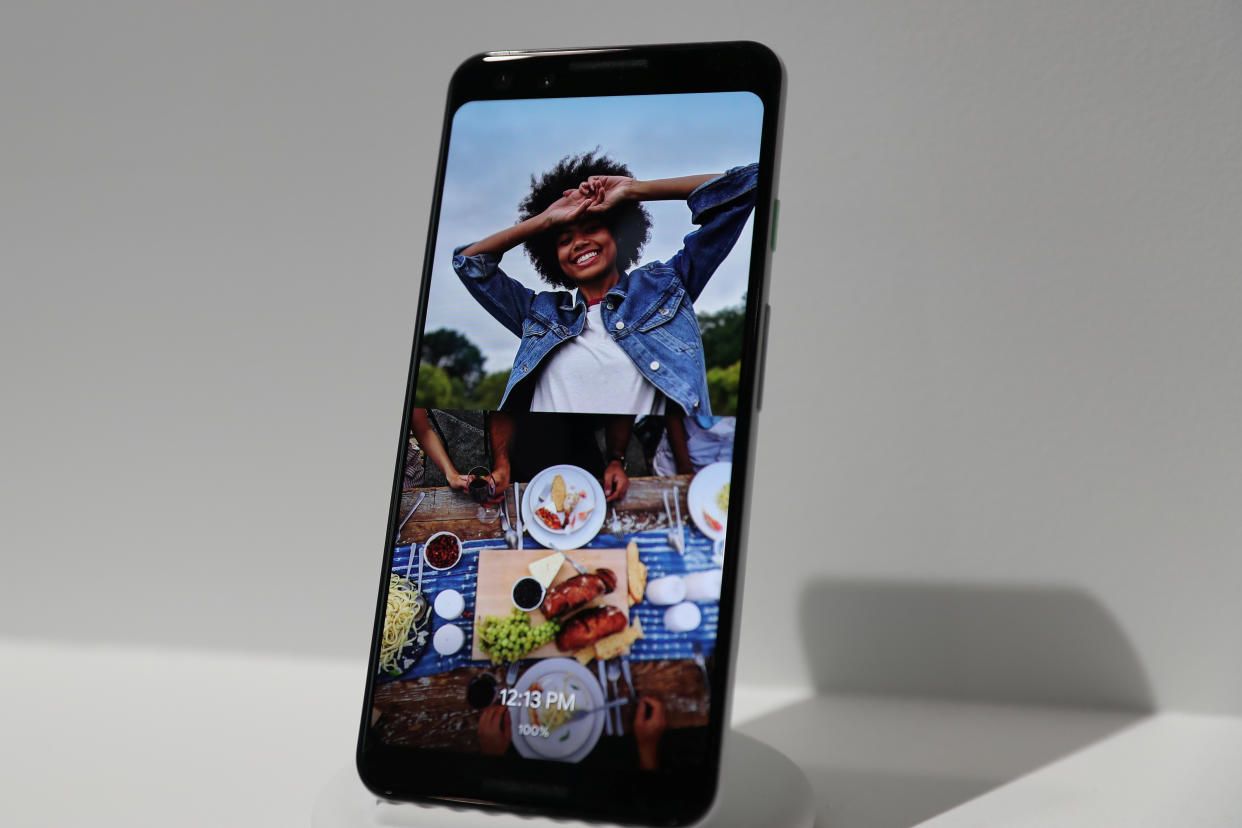With Google’s new devices, music fans once again don’t get jack

The feature on the Pixel 3 and Pixel 3 XL smartphones most likely to annoy customers didn’t even get a mention at the introduction of these new Android devices Tuesday morning.
Of course the absence of the headphone jack on those new Google (GOOG, GOOGL) devices went unsung. The tech giant should have enough search data to know this move would irritate people who won’t want to scrap their wired headphones or plug the 3.5-mm audio cables on them into adapter dongles.
And since last year’s launch of the headphone-jack-deprived Pixel 2 and Pixel 2 XL, another unfavorable data point has emerged: Headphone vendors appear exceptionally uninterested in making models that plug into the USB-C ports on these Pixel phones.
That leaves new Pixel shoppers even worse off than iPhone owners. While Apple (AAPL) was equally foolish in ditching the headphone jack, it has at least been able to spawn a niche market for headphones using its Lightning connector. Now, dropping $799 and up for a Pixel 3 or $899 and up for a Pixel 3 XL—or $599 or more for the equally audio-output-starved Pixel Slate tablet—will reward you with the narrowest possible set of listening options.
No success in accessories
The best-case scenario with a Pixel 3 is that you’ll use the USB-C headphones that come in the box—at the cost of not being able to charge the phone at the same time unless it’s positioned on a wireless-charging surface. But if you want something better, good luck shopping.
Google’s own online store now stocks all of two models, a new $30 set of USB-C earbuds that join a $149 pair of Libratone USB-C headphones.
The site of Best Buy (BBY), meanwhile, lists 387 wired headphones with a 3.5-mm cable, seven with a Lightning connector—fewer than the 10 that come with a quarter-inch cable—and none with USB-C.
Amazon (AMZN) sells a handful of USB-C headphones under $50, but not from brands you’ve heard of.
“There is a huge hole in the accessories market for USB-C headphones,” observed Avi Greengart, an analyst with the research firm GlobalData. One major reason: They represent a lousy business, even compared to Apple’s proprietary Lightning and its licensing fees.
“USB-C is an immature standard,” Greengart wrote. “Everyone seems to implement it differently, and it does cost vendors more than analog connectors.”
The 3.5-mm audio jack, meanwhile, may be old but it just works and delivers the same stereo sound quality as a digital connector like USB-C. And it remains the default on cheaper phones and almost all tablets and laptops, save exceptions like the Pixel Slate and Lenovo’s Yoga Book C930.
Some three-quarters of all headphone sales in the 12 months ending in August involved wired models, said Steve Baker, a vice president for industry analysis at the NPD Group. That sector of the market is, however, shrinking by about 3% a year and getting less profitable, with average prices nearing $10.
Summed up Baker: “So if consumers like wired (and they do), adding USB-C is going to add cost and complexity to a segment that is looking for low cost and ease of use.”
That should explain why such value-priced accessories vendors as Anker and Monoprice are avoiding both USB-C and Lightning headphones.
What this leaves you with
If USB-C is nowhere near becoming the next headphone standard, what else?
To its minimal credit, Google includes a USB-C-to-3.5-mm adapter with each Pixel 3 and Pixel 3 XL, while Apple elected to stop bundling a Lightning-to-3.5-mm dongle with this year’s lineup of iPhones. But you’ll probably need more than one of these adapters, $12 a pop from Google but cheaper elsewhere.
Apple would have us think that wireless is an answer. That’s not crazy if you talk all the time to a digital-assistant app: Bluetooth headphones like Apple’s AirPods will free you from having a cable snaking from your head to the phone in a pocket or purse.
“With the rise of digital assistants, headsets have become much more part of the experience than they ever were,” wrote Creative Strategies analyst Carolina Milanesi in an e-mail. They’re also far more profitable than the wired sort, constituting 67% of headphone-market revenue in NPD’s numbers.
But once Siri shuts up, Bluetooth’s experience is worse than that of wired headphones. GlobalData’s Greengart recited their flaws: “Wireless headphones are more expensive, they can be difficult to pair, they require charging, and they don’t work with legacy systems — like airplane seatback monitors.”
(Inflight-entertainment vendors are working on adding Bluetooth support, but don’t expect to see that on planes until maybe sometime next year.)
“Everybody wants to be Apple,” as Milanesi said. But Pixel phones and a few other un-jacked phones—for instance, the upcoming OnePlus 6T—represent a tiny morsel of the Android market next to such mainstream phones as Samsung’s Galaxy S9 and S9 Plus. The Pixel won’t be Google’s iPhone.
Google could have taken a different path by giving its users the choice of having a headphone jack if they wanted one. That would have honored the “respect our users” principle that hardware vice president Rick Osterloh outlined at the start of Google’s press event Tuesday. Instead, the company bet a second time on the most customer-hostile trend in phone design.
Email Rob at rob@robpegoraro.com; follow him on Twitter at @robpegoraro.
Read more:
Your wireless carrier may stop you from dumping cable TV


